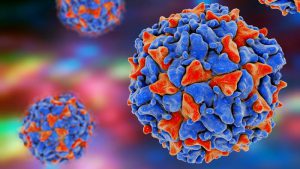
Most people who get infected with poliovirus will not have any visible symptoms.
About 1 out of 4 people (or 25 out of 100) with poliovirus infection will have flu-like symptoms that can include:
- Sore throat
- Fever
- Tiredness
- Nausea
- Headache
- Stomach pain
These symptoms usually last 2 to 5 days, then go away on their own.
A smaller proportion of people with poliovirus infection will develop other, more serious symptoms that affect the brain and spinal cord:
- Meningitis (infection of the covering of the spinal cord and/or brain)occurs in about 1–5 out of 100 people with poliovirus infection, depending on virus type
- Paralysis (can’t move parts of the body) or weakness in the arms, legs, or both occurs in about 1 out of 200 people to 1 in 2000 people, depending on virus type
Paralysis is the most severe symptom associated with poliovirus because it can lead to permanent disability and death. Between 2 and 10 out of 100 people who have paralysis from poliovirus infection die, because the virus affects the muscles that help them breathe.
Even children who seem to fully recover can develop new muscle pain, weakness, or paralysis as adults, 15 to 40 years later. This is called post-polio syndrome.
Note that “poliomyelitis” (or “polio” for short) is defined as the paralytic disease. So only people with the paralytic infection are considered to have the disease